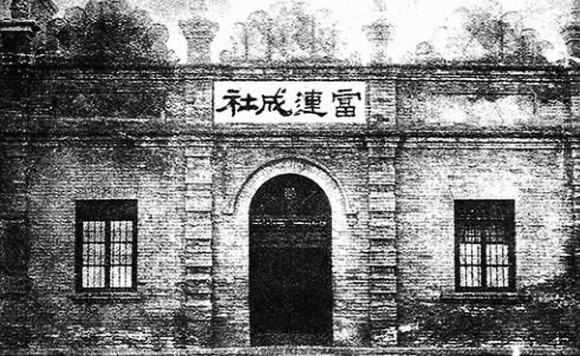Innovation in Republican period opera

China’s most influential old-style opera school Fuliancheng Society
During China’s Republican period (1912-49), there emerged a number of schools serving traditional operas. Employing new theories and principles for artistic education in a new age, they served as a supplement to the old-style opera schools.
These new opera schools drew upon successful experiences from older forms of schools as well as from Western advanced education thinking, inventing their own principles for running the schools.
For example, the Chinese Opera Training School (Zhonghua Xiqu Zhuanke Xuexiao), established in 1930 in Peiping (now Beijing), held the principle of “combining the spirit of old-style opera schools and the system in music and opera schools in Europe and America, so as to build a training institution based on schooling.”
These new opera schools represent a transition from old-style opera schools to modern schools. They originated for the purpose of innovating in traditional operas and made great contributions to traditional opera education and to the art itself.
One innovation was in relation to the curriculum. New opera schools in the Republican period provided not only training classes for the art but also cultural courses, in order to cultivate well-rounded talents suitable for a modern society, and this is what was lacking in old-style schools.
The Linggong Society (Linggong Xueshe) in Nantong, Jiangsu Province, offered courses including Chinese, calligraphy, mathematics, history, geography and English, as well as opera histories.
Another innovation involved teaching methods. New opera schools paid high attention to proportional balancing between numbers of male and female students. They also adopted various innovative teaching methods.
Basic training of four skills and five techniques (Si Gong Wu Fa), namely “singing, recitation, symbolic moves, theatrical fighting” and “hand, eye, body, steeping and technique,” which were the key elements of training in old-style schools, were not neglected in the newer schools.
In addition, the Chinese Opera Training School laid an emphasis on developing students’ creativity and imagination. For example, students were encouraged to write, direct and act small plays on their own. Lectures by experts and tours to the Palace Museum and other places exhibiting traditional opera culture were also implemented to allow students to broaden their knowledge and vision.
The third kind of innovation related to adapting the traditional repertory, writing new plays and reforming in stage acting. A number of well-known actors and writers lent support to this undertaking.
Cheng Yanqiu (1904-58), a distinguished Peking Opera artist, was invited to give lectures to the Chinese Opera Training School and dedicated his scripts of two adapted plays The Peacocks Fly to Southeast and Liang Hongyu to the school.
Ever since its establishment, the Chinese Opera Training School set about specifying norms for stage performance and adapting traditional repertory. While trying to sustain the characteristics of each traditional opera, traditional plays were adapted and new plays were created to cater for modern needs and serve social functions. It produced and staged a great many new plays which were well received in Tianjin, Qingdao in Shandong Province, and from the media.
Ai Lizhong is from the School of Humanities at Soochow University in Jiangsu Province.
